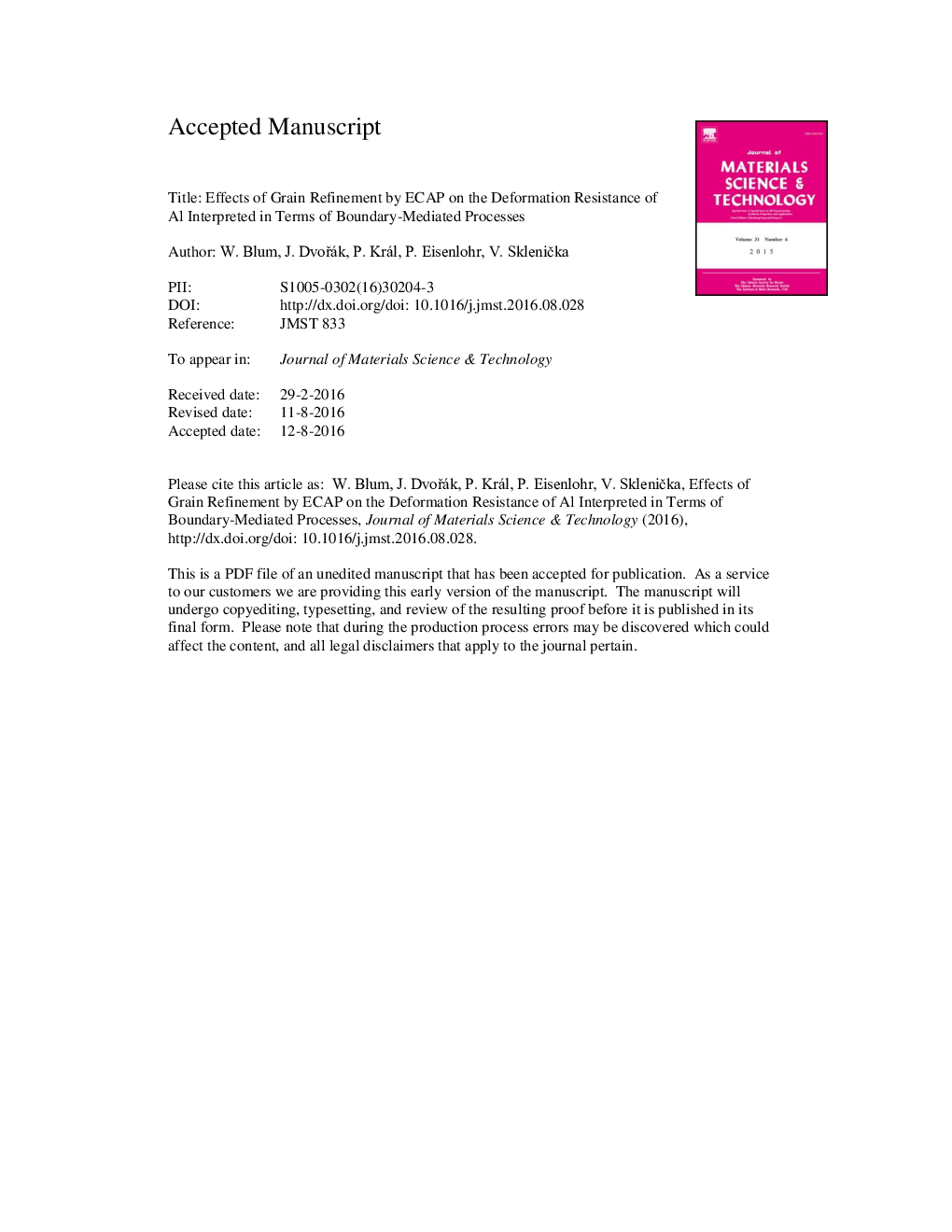| Article ID | Journal | Published Year | Pages | File Type |
|---|---|---|---|---|
| 5451734 | Journal of Materials Science & Technology | 2016 | 24 Pages |
Abstract
Results of a large set of tensile and compressive creep tests on pure Al were reanalyzed for the influence of low- and high-angle grain boundaries on the deformation resistance at the temperature Tâ=â473âKâ=â0.51Tm where Tm is the melting point. Thermomechanical treatment by equal channel angular pressing followed by heating to T led to strong increase of areal fraction of high-angle boundaries in a structure of subgrains of â10â6âm in size, accompanied by significant reduction of subgrain strengthening and of the stress sensitivity of the deformation rate. (Sub)grain strengthening by low-angle boundaries is most effective; the strengthening effect virtually disappears during creep as the boundary spacings coarsen toward their stress-dependent, quasi-stationary size wqs. The same type of coarsening is found for (sub)grain structures with large fraction of high-angle boundaries; in the quasi-stationary state they lead to softening at low and strengthening at high stresses, and a significant increase in tensile fracture strain to values up to 0.8. The results are analogous to former results for Cu and are explained in the same way by the influence of boundaries on storage and recovery of crystal defects and the homogenization of glide.
Related Topics
Physical Sciences and Engineering
Materials Science
Materials Chemistry
Authors
W. Blum, J. DvoÅák, P. Král, P. Eisenlohr, V. SkleniÄka,
